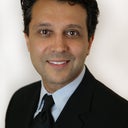Answers (16)
From board-certified doctors and trusted medical professionals
Dr. Jeffrey Epstein, MD, FACS
Hair Restoration Surgeon, Board Certified in Facial Plastic Surgery
Answer
More Facelift Questions
See all Facelift Q&AWE SEND PRETTY
EMAILS
What’s trending? Who’s turning heads? Which TikTok myths need busting? We’ve got you. No fluff, no gatekeeping—just real talk. Get our free, unfiltered newsletter.




